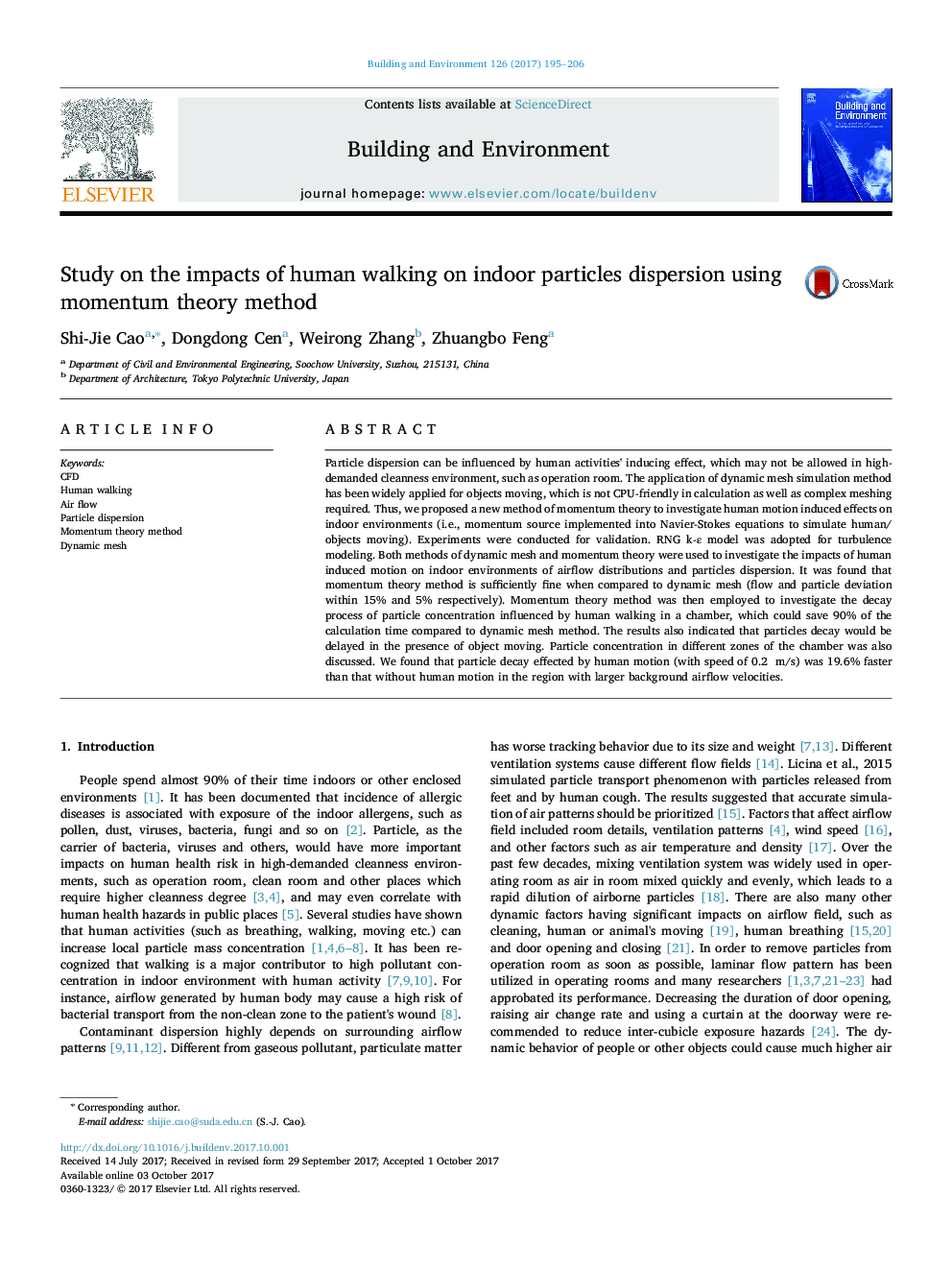| کد مقاله | کد نشریه | سال انتشار | مقاله انگلیسی | نسخه تمام متن |
|---|---|---|---|---|
| 6479178 | 1428366 | 2017 | 12 صفحه PDF | دانلود رایگان |
- Momentum theory method proposed on human motion induced indoor environments.
- Deviations between dynamic mesh and momentum theory methods are limited.
- Momentum theory method saving up to 90% calculation time for particles dispersion.
- Human motion having strong impacts on surrounding airflow and particle dispersion.
Particle dispersion can be influenced by human activities' inducing effect, which may not be allowed in high-demanded cleanness environment, such as operation room. The application of dynamic mesh simulation method has been widely applied for objects moving, which is not CPU-friendly in calculation as well as complex meshing required. Thus, we proposed a new method of momentum theory to investigate human motion induced effects on indoor environments (i.e., momentum source implemented into Navier-Stokes equations to simulate human/objects moving). Experiments were conducted for validation. RNG k-ε model was adopted for turbulence modeling. Both methods of dynamic mesh and momentum theory were used to investigate the impacts of human induced motion on indoor environments of airflow distributions and particles dispersion. It was found that momentum theory method is sufficiently fine when compared to dynamic mesh (flow and particle deviation within 15% and 5% respectively). Momentum theory method was then employed to investigate the decay process of particle concentration influenced by human walking in a chamber, which could save 90% of the calculation time compared to dynamic mesh method. The results also indicated that particles decay would be delayed in the presence of object moving. Particle concentration in different zones of the chamber was also discussed. We found that particle decay effected by human motion (with speed of 0.2  m/s) was 19.6% faster than that without human motion in the region with larger background airflow velocities.
Journal: Building and Environment - Volume 126, December 2017, Pages 195-206
